Combat aircraft. "Heinkel" shot down by "Messerschmitt"
So we will talk about He.100 in the next article, and today we have He.112.
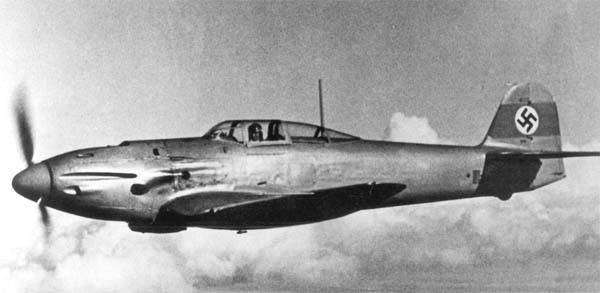
In general, it is worth saying a few words about its predecessor. It was the He.70 "Blitz", a mail-and-passenger plane that fate had turned into a bomber. The He.70 broke eight world records in early 1933, including Heinkel's brainchild that flew 1000 kilometers with a payload of 1000 kg and an average speed of 347 km / h.
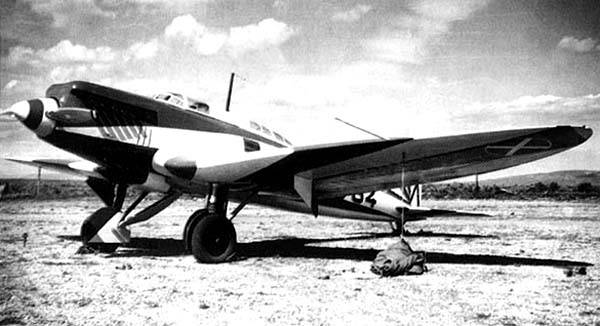
At that time, fighters did not fly at such a speed, what can we say about civilian aircraft ...
In general, the plane went into production, but somehow very quickly gave way to new models and left the stage.
But not only the first "Blitz" became obsolete, but also the Heinkel He.51 and Arado Ar.68 biplanes, which were in service at that time. And in 1934, Goering announced the terms of reference for a single-seat monoplane fighter to replace obsolete biplanes.
The assignment provided for the development of a single-seat single-engine all-metal monoplane with a maximum speed of at least 400 km / h at an altitude of 4000 meters.
Three leading companies were involved in the development: "Arado", "Focke-Wulf" and "Heinkel". It is interesting that Bayerische Flyugzeugwerke and its chief designer Willie Messerschmitt were considered insufficiently prepared for such work and they did not give money to build a prototype. Messerschmitt took offense and undertook to build a model for his own money.
By the spring of 1935, prototypes of the Arado Ar.80 and Focke-Wulf FW.159 fighters were built. And for Heinkel, loaded with other projects, the work was delayed. Because in the Ministry aviation decided to start competitive tests without Heinkel's brainchild.
What happened in practice?
Аr.80 is a cantilever low-wing aircraft with a trapezoidal “reverse gull” wing and a liquid-cooled engine.
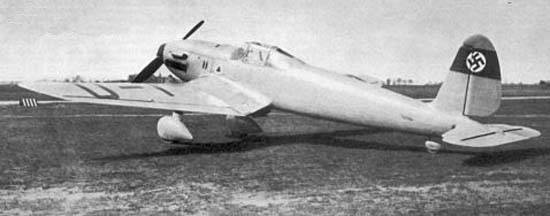
Fixed landing gear with fairings, open cockpit and linen covering of the aft fuselage - this in 1935 could not be called modern. In one of the first flights, the plane was smashed to smithereens and it was decided not to restore it.
The fighter from the Focke-Wulf was distinguished by its originality.
The FW.159 was a strut-braced high-wing parasol with a closed cockpit and retractable landing gear. This chassis, in fact, destroyed the plane. During the first flight, it formed during landing, the plane crashed and never recovered.
It so happened that Heinkel had no competitors left. The firm quietly finished the plane, which flew for the first time on September 1, 1935.
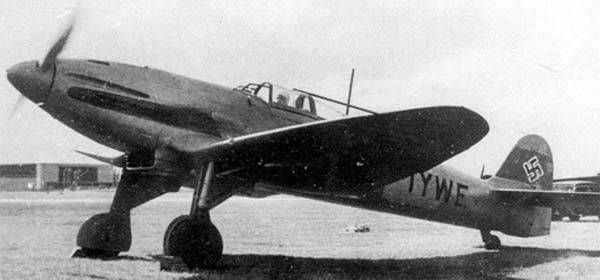
It seemed that nothing boded trouble, but then upstart Willie Messerschmitt appeared with his Bf.109 V1. And a real struggle began, so much so that the Ministry of Aviation could not make a final choice for a long time.
It makes no sense to tell what Bf.109 is, but you need to compare it with He.112.
The Bf 109 proved to be light, fast and very stable. In addition, the car was very easy to fly.
Not 112 due to the lower load on the wing was more maneuverable. In addition, the Heinkel had better takeoff and landing qualities, better steering stability due to the wider chassis track and better visibility due to the open cockpit.
The rate of climb for both aircraft was approximately the same.
As a result, Heinkel and Messerschmitt received orders for 15 pre-production vehicles for final military trials.
In February 1936, a second round began in Rechlin. By this time, at the insistence of the Ministry, the fighters were equipped with the same Junkers Yumo 210 engines with a capacity of 640 hp.
The test was performed by the best pilots of the Reich: Robert von Greim, Karl Franke and Ernst Udet.
The competition was almost equal. Both prototypes were interesting, no one had an advantage. Udet was leaning towards Heinkel. The opinion of such an expert meant a lot, but alas. No. 112 in one of the flights had an accident, was repaired, but soon it was crashed again and this time completely.
But "Messerschmitt" completed a series of tests without incidents. In addition, Bf.109 turned out to be significantly cheaper and technologically simpler than He.112. As a result, a batch of 76 aircraft was ordered to Messerschmitt's firm, and He 112 was out of work.
However, He 112 was not written off from the accounts. The order for 15 He 112 aircraft was not canceled, and the aircraft itself was left as a backup, just in case.
The series was released, the engine was changed to Yumo 210DA with a capacity of 650 hp. and the possibility of forcing within 5 minutes up to 695 hp. The armament consisted of two wing-mounted 7,92 mm machine guns.
They decided to put the car on the international market. A 20-mm MG C / 30L cannon from Rheinmetall-Borzig was installed in the camber of the engine and was shown to the Japanese in this form.
The Japanese military department bought one car for study, which was sent by sea to Japan.
And then the Spanish Civil War began. The German command decided to use the war as a testing ground for new technology. Therefore, in November 1936, three Bf.109 and one He.112V6 went to Spain.
Naturally, the aircraft became part of the Condor Legion.
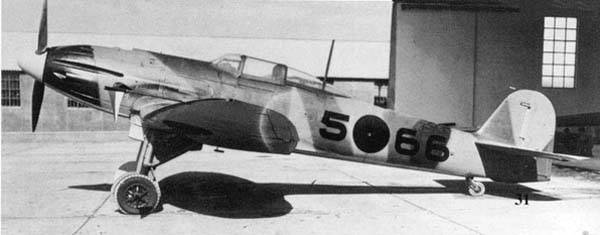
An interesting point: the He 112 was the only fighter with cannon armament not only in the legion, but in all of Franco's aviation. Therefore, without further ado, they decided to use the He.112 as an attack aircraft, together with the Ju.87 and Hs.123. And so the fighter began to strike at ground targets.
On March 16, 1937, the He 112, under the control of Wilhelm Baltasar, made its most successful sortie in that war. Baltasar attacked the Republican armored train at Seseña station. The pilot managed to hit the ammo rack in one of the cars. An ammunition explosion occurred, as a result of which the armored train was incapacitated.
On account of the He.112, at the time of the end of his service, in addition to the armored train, there were one tank, three armored cars and about a dozen trucks.
The plane was crashed during landing due to a suddenly jammed engine.
However, by that time Heinkel had already realized that Messerschmitt had won. Production of the Bf.109 was gaining momentum, and the prospect of the He.112 was rather dim. And Heinkel decides to radically remake He. 112. The name remained the same, but it was actually an airplane redesigned.
Almost everything in the structure was different: fuselage, empennage, wing, engine. The only thing that has remained unchanged is the shape of the reverse gull wing. And He.112 became the first fighter in the world with an all-round teardrop-shaped lantern.
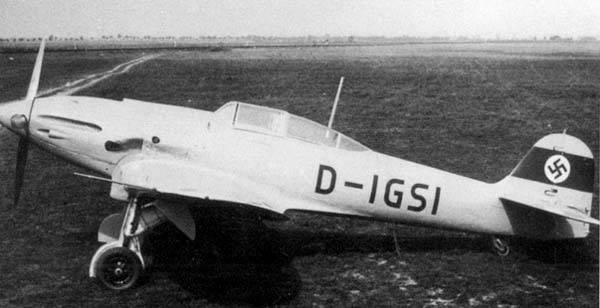
The engine was planned to be installed DB 600A with 950 hp. This engine would make the fighter a very promising machine. But then it turned out a little unpleasant for Heinkel. Not many DB 600A engines were assembled, and they went to the He.111 bomber. Therefore, we had to return to the same Yumo 210, with which the plane could not show decent performance.
He 112 took a direct part in the experiments of Professor Brown, who liked the aerodynamic shape of the aircraft. And one of the first Walter rocket engines was installed on the He.112.
The first pancake came out lumpy, the engine exploded at the first start. It is good that the pilot was not in the cockpit, and for safety reasons the launch was carried out remotely. The plane, of course, was completely destroyed.
But Brown did not calm down, and received a second copy of He.112. And in April 1936, test pilot Erich Warzitz took to the air a car equipped with a conventional engine and a Walter engine. At an altitude of 800 meters, the pilot turned off the piston engine and turned on the rocket engine.
The plane accelerated from 400 to 460 km / h, which proved the right of the rocket engine to exist. And a few years later, in principle, the same, but slightly modernized Walter engine lifted the Me.163 rocket fighter into the sky.
The flights of fighters with a combined power plant provided Heinkel and von Braun with valuable information for creating an experimental He.176 rocket aircraft.
And already starting from the developments on the He.176, the He.162 "Salamander" was created. We can say that initially the He.112 became the platform from which several Heinkel planes took off into the sky.
While the development of the He.112 rocket version was underway, Heinkel continued to work on the piston machine. Since the DB.600 could not be obtained, Heinkel installed a 210E on the Yumo plane with a capacity of 680 hp.
The difference between 950 and 680 hp Heinkel decided to compensate with aerodynamics. 270 h.p. - a huge figure, but Heinkel did it. Perfectly "licked" smooth shapes performed a miracle. Even the water radiator was retractable, which at that time was considered not the most successful solution. But I repeat, Heinkel succeeded.
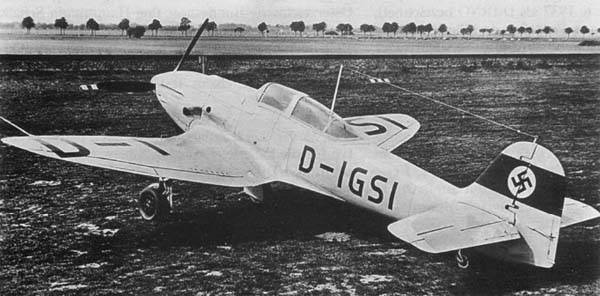
The He.112V turned out to be faster than the Bf.109 by as much as 40 km / h, had a better rate of climb and working altitude, excellent visibility and excellent taxiing behavior. And all this - with the same engine as the Bf.109!
The armament of the He.112 also did not compare with the Bf.109. The Messerschmitt was armed with two synchronous MG.17 machine guns, and the He 112 to a pair of the same machine guns carried two MG-FF 20-mm wing cannons with an ammunition load of 60 rounds per barrel.
The cannon version of the Bf.109D appeared only at the end of 1937, there was only one cannon and the aircraft did not go into production due to an incomplete engine. It was replaced by the E version in 1939.
According to its characteristics, the He 112 looked much better than the Bf 109. But the trouble is, the inertness of the Reich Aviation Ministry was expressed, among other things, in excessive conservatism. We know many examples of how excellent cars did not go into mass production precisely because the ministry did not want to take risks.
So it happened in the case of He 112. For the sake of a great machine, no one wanted to break the established production chains, especially since the production of the Bf.109 was in full swing. The Bf.109 was still more versatile and technologically advanced than the He.112.
So Heinkel had to give up the idea of selling his plane to the Luftwaffe. But there was still hope for export sales.
And the Heinkel company launched an advertising campaign. Noisy and pompous. Photos of the aircraft did not leave the pages of aviation magazines, the aircraft was shown to delegations of many countries, magazines published reports on test flights of pilots in Austria, Hungary, Spain, Romania, Yugoslavia and Japan.
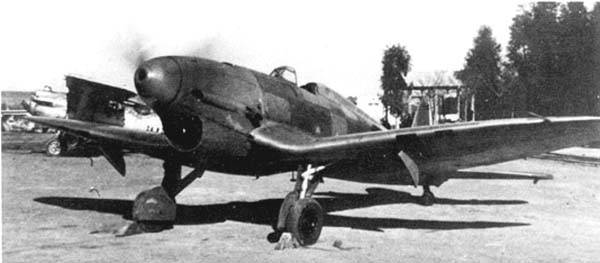
In 1938, He 112 made an advertising tour of small European countries interested in renewing their fleet of fighter aircraft. Potential customers were offered to buy not only finished machines, but also licenses for their production.
Potential buyers included Japan, which by that time had already bought five cars, Austria, Romania, Hungary, Finland and Spain. However, the Spaniards, in the conditions of the continuing civil war, were ready to buy everything at a reasonable price.
But the first buyers were the Japanese. At the end of 1937, a contract was signed for the supply of 30 vehicles and a protocol of intent to purchase another hundred. The first He 112 entered the Imperial Air Force fleet Japan under the designation "A7He1 sea interceptor" in early 1938.
The pilots of the Japanese fleet did not like the car. Training battles were conducted with the main at that time A5M2 naval fighter.
It turned out that the He.112 surpasses the A5M2 in speed by 65 km / h, but the Japanese plane turned out to be stronger on turns. In Japan, then there was a doctrine according to which the main application of a fighter was maneuverable combat on the horizontal. Therefore, the German aircraft, which did not fit into the concept, was received more than coolly. In addition, the He 112 could not be used on aircraft carriers, liquid-cooled engines were not held in high esteem in Japan, so the Japanese fleet refused to buy a batch of 100 aircraft.
Some aircraft from the Japanese party managed to get into the Luftwaffe and theoretically take part in the Sudeten crisis in the summer of 1938, when all the aircraft of the export consignments were temporarily requisitioned.
From He.112, a separate fourth group was formed as part of the 132nd "yagdgeshwader". The fighters received military camouflage, identification marks and tail numbers. The group was based in Osac, near Leipzig, providing air cover for the city.
Having received the Sudetenland, and then the whole of Czechoslovakia, Hitler calmed down and the planes returned to the owner, and then were sent to Japan.
As far as is known, the He 112 was used in Japan only as training aircraft.
The Spaniards (General Franco's military department) acquired 19 Ne.112B1 and B2. From these aircraft, a separate squadron, Grupa de Casa 5-G-5, was formed, staffed with experienced pilots. However, by that time the war had actually ended with Franco's victory, and during the entire time the Spanish pilots on the He 112 had won only one air victory.
Captain Garcia Prado shot down I-16 Republicans in battle. And two days later, Lieutenant Luciano Erero shot down a He.16 in an I-10 type 112. So the score in the Spanish conflict was 1: 1.
Republican aviation practically ceased to take part in hostilities, so that until the end of the war, the He 112 was used as attack aircraft. The 20mm cannons were very effective against light armored vehicles and steam locomotives.
In the summer of 1939, No. 112 were sent to Morocco. There, for three years, the pilots fought mainly with boredom and sandstorms. But in 1942 Operation Torch began and the Americans landed in French Morocco. Constant violations of borders began and the Spaniards began to live more fun.
It even came to a conflict. A single He.112 attacked the P-38 Lightning group of 11 (eleven!) Vehicles. One of the Lightnings was hit by a shell in the engine, but made it to its territory.
True, the Spanish-American war did not work out, everything was settled through diplomatic means.
The fate of the He.112 in the Spanish Air Force was very long. After the war, the planes were transferred to the flight school in Moron and flew there as training until 1952. Few pre-war aircraft could boast such a long service life.
The Hungarians also bought No. 112. The purchase of 36 cars was planned, but only 4 were bought. The Hungarians considered that the Yumo 210 was too weak, and the DB.600 was not exported. We didn't have enough ourselves. So the aircraft served in the Hungarian Air Force as training aircraft until 1944.
But the most actively using the He.112 country was Romania. The Romanians bought only 30 aircraft, but used them to the fullest.
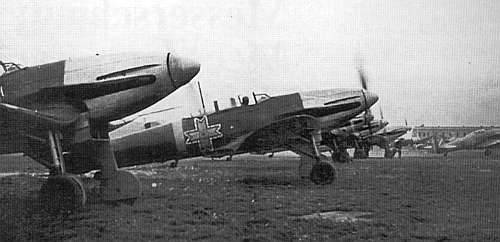
The Romanians, like the Japanese in their time, compared the He 112 with their main fighter IAR-80. The comparison was not in favor of the German aircraft. The IAR-80, equipped with a 900-horsepower engine, was not inferior in speed, but was easier to maneuver and easier to fly. The only thing that was stronger than the He.112 was in armament. The Romanian fighter had only rifle caliber machine guns.
So He 112 in the Romanian Air Force became an attack aircraft.
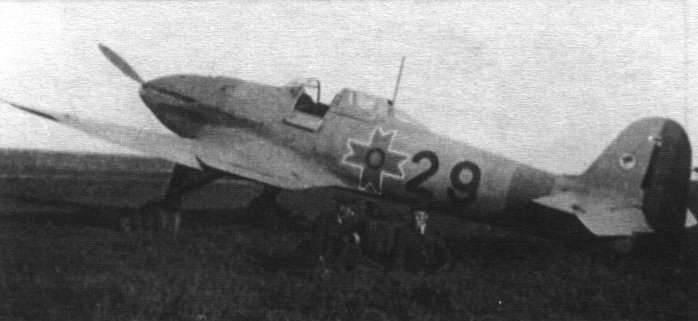
On June 22, 1941, No. 112 attacked Soviet airfields. The first aerial victories in the Romanian aviation were won on the Heinkel. Theodore Moscu shot down two I-112s on He 16 over the airfield in Bolgaritsa. True, the pilot of the second shot down "donkey" ripped apart the fuselage of the "Heinkel" with bursts of ShKAS and punctured the gas tanks, so that he barely made it to his airfields.
And the next day, He.112 suffered the first losses. Soviet anti-aircraft gunners shot down the No. 112 adjutant of the regiment Angela Codrut, who was captured.
It cannot be said that participation in the Great Patriotic War was an easy walk for Romanians. By July 24, 1941, a month after the start of the war, only 14 He 112 remained in the ranks, half of the original number.
Further, the remaining in the ranks of Ne.112 were transferred to Odessa, in fact, to the rear. Basically "Heinkels" flew to patrol the coastal zone and sea reconnaissance.
In July 1942, the remaining 9 He 112 were transferred to night fighters and based at Ploiesti, where they tried to repel night bombardments. But at the beginning of 1943, the He.112 were replaced by the more suitable for this role, the Me.110.
On this, the combat service of the No.112 ended. The surviving vehicles (7 units) were transferred to the category of training vehicles. The last one was written off in 1947.
If we turn to the memoirs of the Romanian pilots, it should be noted that they did not value the German aircraft highly. However, there is a fact that the No.112 was not used for its intended purpose. Using a fighter-interceptor as an attack aircraft is not entirely correct. Still, the lack of armor is a huge drawback.
Gas tanks in the wings, vulnerable liquid-cooled engines, again not covered by armor - this is not for an attack aircraft.
And he fought on equal terms with He.112 fighters. True, these were not entirely new I-16s, but He.112 was also not one of the newest, you must agree.
The result can be voiced as follows: "Heinkel" No.112 was far from the worst or unsuccessful plane in stories that war. I would say - at the level of such aircraft as Yak-1, R-40 and LaGG-3.
However, the Reich Air Ministry made the right decision by adopting the Messerschmitt. As a primary fighter, it was cheaper and more practical.
And "Heinkel" No.112 remained, alas, on a secondary role. We can say episodic.
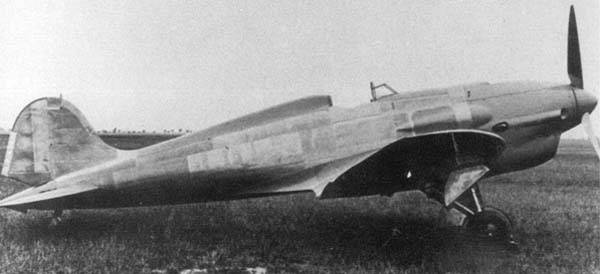
But this is exactly the case when it is not that the strongest, but the more profitable project that wins.
In total, from 1935 to 1939. 98 copies of the He 112 were built, including 15 prototypes and machines of the A-0 series.
LTH He.112b-0
Wingspan, m: 9,10
Length, m: 9,30
Height, m: 3,80
Wing area, м2: 17,00
Weight, kg
- empty aircraft: 1 621
- normal takeoff: 2 250
Engine: 1 х Junkers "Jumo-210Eа" х 680 hp
Maximum speed km / h
- near the ground: 430
- at height: 510
Cruising speed, km / h: 480
Practical range, km: 1 100
Maximum rate of climb, m / min: 770
Practical ceiling, m: 8 300
Crew, prs: 1
Armament:
- two wing-mounted 20-mm MG-FF cannons
- two synchronous 7,92 mm MG-17 machine guns
- up to six 10-kg bombs on external holders
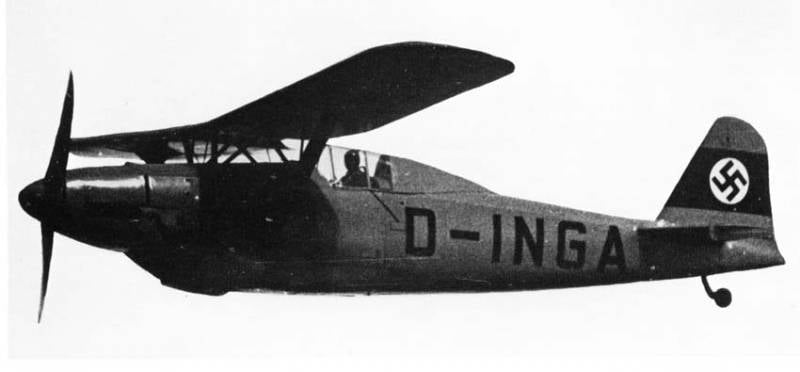
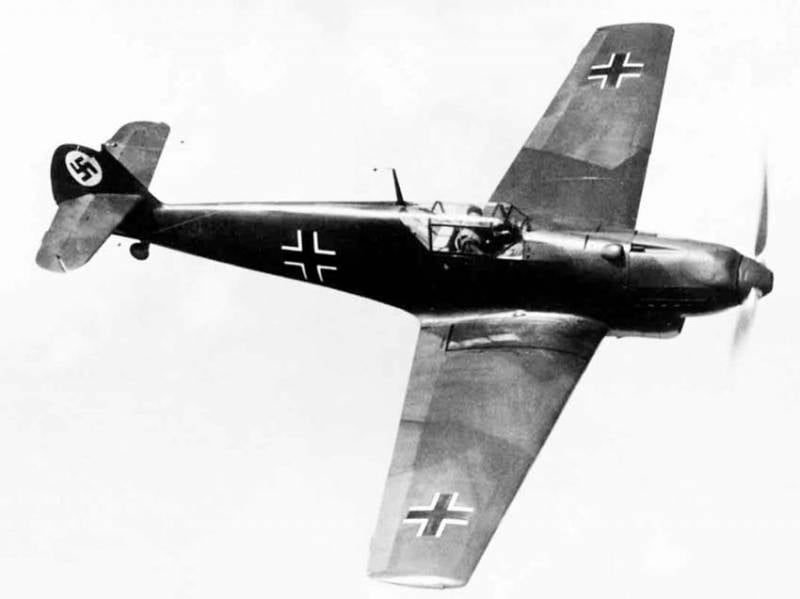
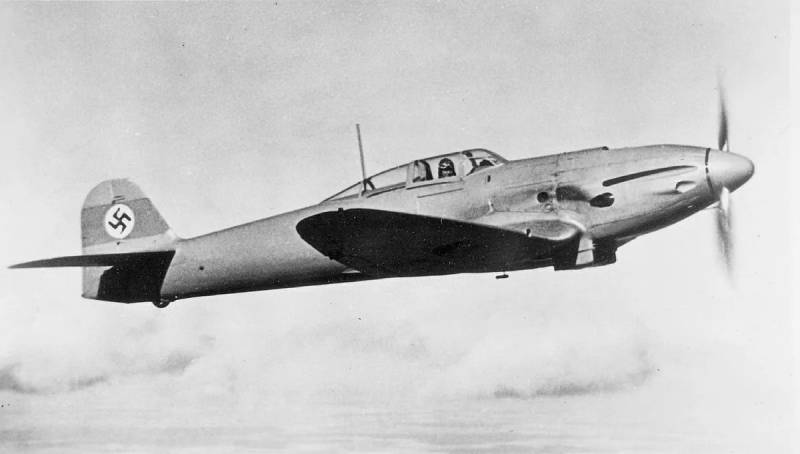
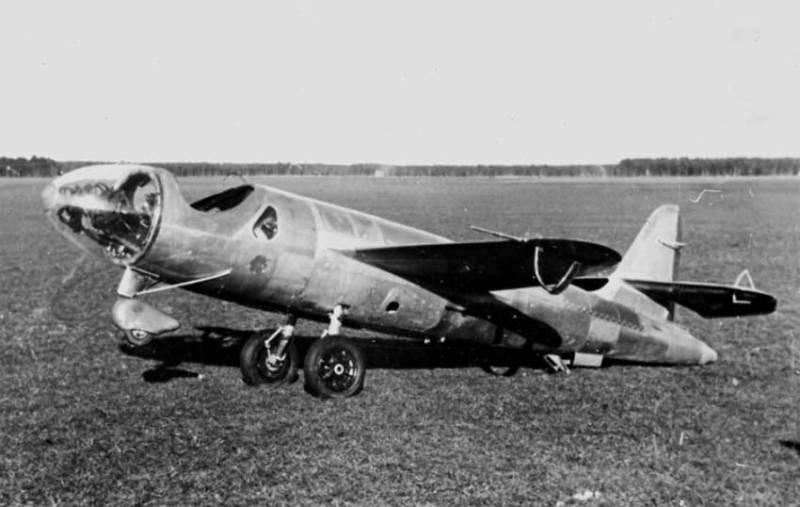
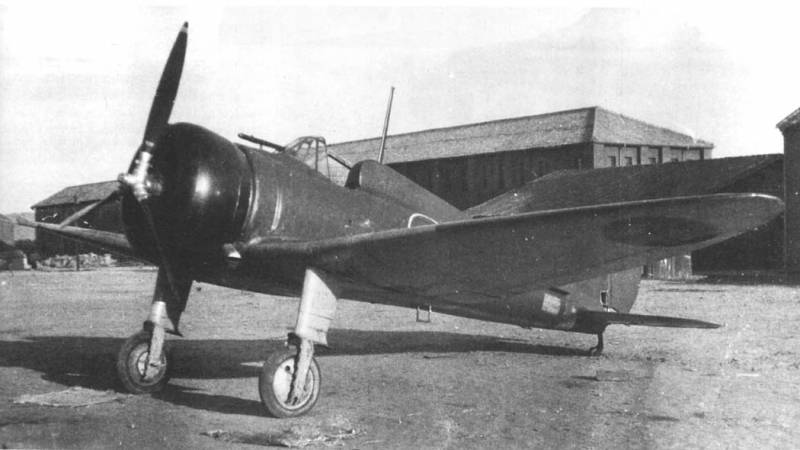
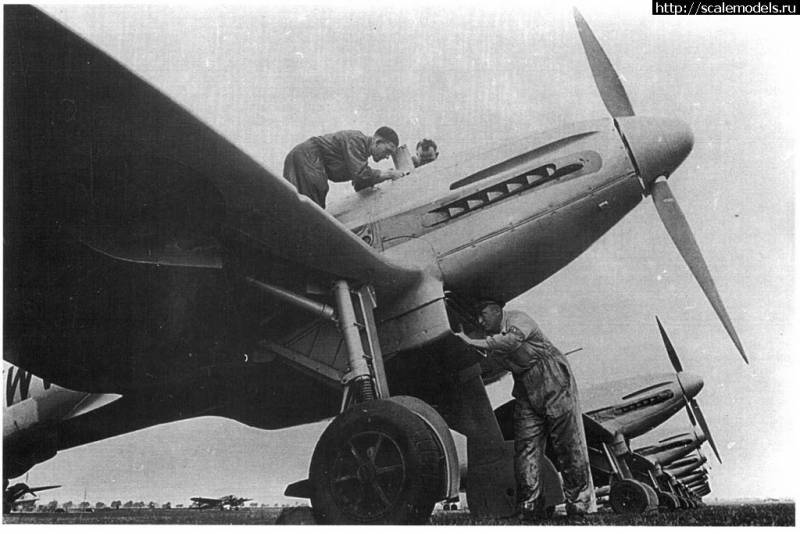
Information